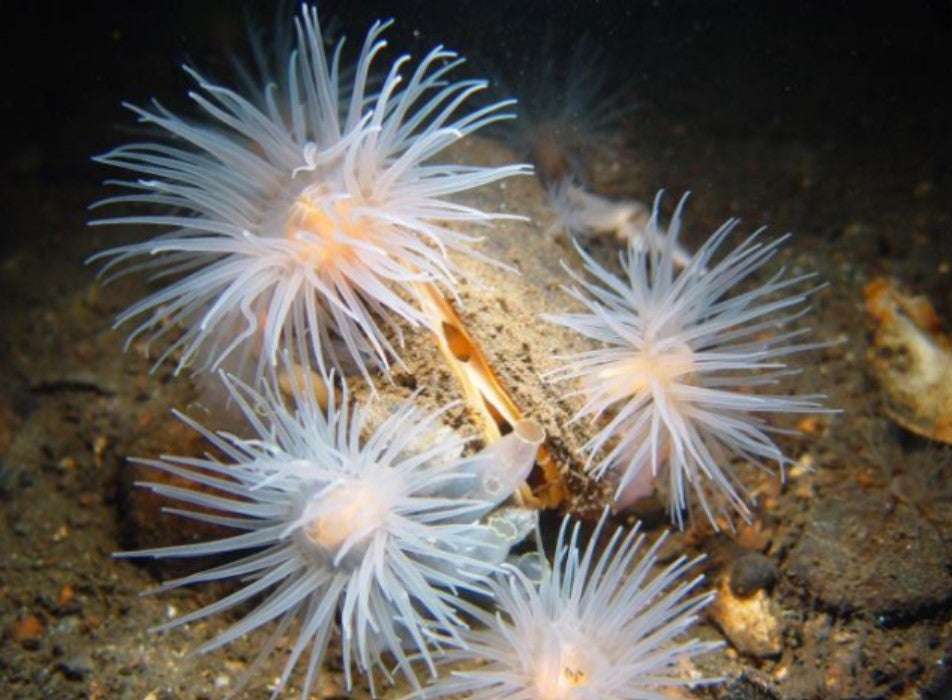Giant mussels found in UK waters under threat due to conservation ‘failures’
Horse mussels, some measuring about 20cm in length, can live for several decades

Your support helps us to tell the story
From reproductive rights to climate change to Big Tech, The Independent is on the ground when the story is developing. Whether it's investigating the financials of Elon Musk's pro-Trump PAC or producing our latest documentary, 'The A Word', which shines a light on the American women fighting for reproductive rights, we know how important it is to parse out the facts from the messaging.
At such a critical moment in US history, we need reporters on the ground. Your donation allows us to keep sending journalists to speak to both sides of the story.
The Independent is trusted by Americans across the entire political spectrum. And unlike many other quality news outlets, we choose not to lock Americans out of our reporting and analysis with paywalls. We believe quality journalism should be available to everyone, paid for by those who can afford it.
Your support makes all the difference.A species of large mollusc could be at risk due to unprotected areas of the sea near its bed, a new study has found.
Measuring up to 20cm in length, horse mussel can live for several decades and are found mainly around the north of the British Isles.
Marine experts have described their beds as “biodiversity hotspots”, providing foundations for soft corals and barnacles, as well as shelter for many small sea creatures and habitat for shellfish.
Their decline has been known about since the 1990s, and marine protected areas (MPAs) were introduced to protect their numbers.
But a new study by scientists at Heriot-Watt University in Edinburgh shows the species is at risk due to a “failure” to consider gaps between protected areas of the sea where their beds lie.
Dr Jo Porter, based at Heriot-Watt’s Orkney campus, worked alongside a team of scientists and researchers to sample horse mussel beds around Scotland and analyse their DNA.
She said: “We wanted to find out whether these areas are actually doing their job of protecting the horse mussels and how they operate as a network.
“This is especially important because, like many protected marine species, the larvae spend time travelling in the plankton before they settle.
“What we discovered is that the spaces and connections between MPAs are essential for the mussel beds.
“Some of the horse mussel beds wouldn’t be able to survive without the network, they are dependent on the unprotected spaces in between.”
The team analysed genetic markers of the mussels’ DNA, assessing how genetically connected and diverse the populations were. Low connectivity and diversity could make them less resilient to environmental changes.
Divers went to depths of more than 40m to collect the samples at MPAs in Scotland.
Their research showed that the Noss Head horse mussel bed, which covers 385 hectares and is one of the largest of its kind in the UK, could be at risk if other beds populated by the species are not protected.
This is because their genetics sampling suggested the Noss Head bed is reliant on larvae coming from as far away as Shetland.
Dr Porter said the findings make the case for more research into how MPAs function.
“Marine protected areas are an excellent tool for protecting marine species, but we know hardly anything about how they are connected, despite many governments committing to so-called networks,” she said.
“Horse mussels are just the tip of the iceberg – there are many other species that are hugely important for conservation and biodiversity that are protected by marine protected areas.
“But, as with horse mussels, they could be far more vulnerable than we think, despite occurring in protected areas.”
Join our commenting forum
Join thought-provoking conversations, follow other Independent readers and see their replies
Comments